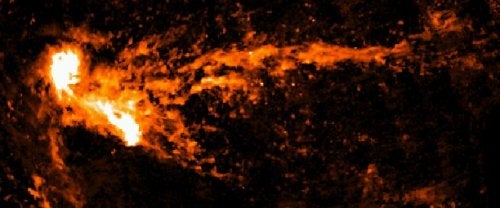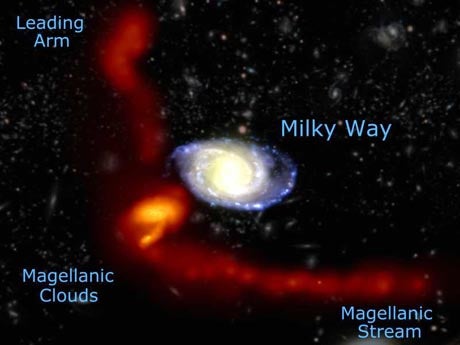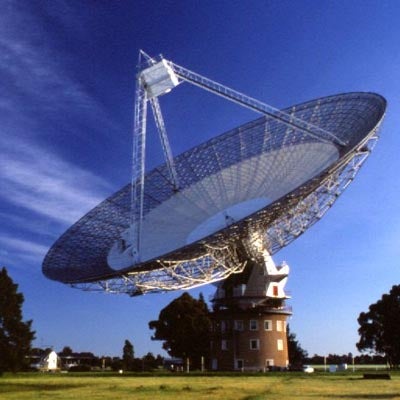Forty years ago astronomers discovered clouds of hydrogen gas moving with high velocities near the Milky Way Galaxy. It had been unclear, until now, if these clouds were gravitationally bound to the Milky Way or were simply passing near our galaxy as they traveled through the Local Group. Recent studies presented by Mary Putman of the University of Colorado show that these clouds are probably material stripped from small galaxies and that they are now companions of the Milky Way.
Using the Commonwealth Scientific and Industrial Research Organisation’s Parkes Radio Telescope in eastern Australia, Putman and her collaborators made highly detailed maps of hydrogen gas in and near the orbital paths of the Magellanic Clouds. Along the orbits of these two galaxies is a trail of material — including hydrogen gas — called the Magellanic Stream. Our galaxy ripped this material from the Magellanic Clouds. Putman and her team believe the high-velocity clouds have similarly destructive origins and were created when the Milky Way looted material from additional small galaxies.
“We now have pretty conclusive evidence that the high-velocity clouds are not scattered throughout our Local Group of galaxies, but are within the extended halo of the Milky Way,” says Putman.
These results fit well with related observations of other groups of galaxies. “Previous studies of other galaxy groups haven’t found any counterparts of the high-velocity clouds,” said team member Lister Staveley-Smith of the Australia Telescope National Facility. “If the clouds are there, they must lie close to the big galaxies rather than scattered throughout galaxy groups.” If large galaxies create the clouds by stripping material from small, nearby galaxies, the clouds will naturally lay close to large galaxies.
If the high-velocity clouds traced the locations of these dark matter halos, you’d expect the clouds to be strewn throughout the Local Group. But because the gas clouds are only found close to the Milky Way they cannot be associated with the dark matter halos. While dark matter halos may still roam the Local Group, they aren’t associated with these streaming clouds of hydrogen.












